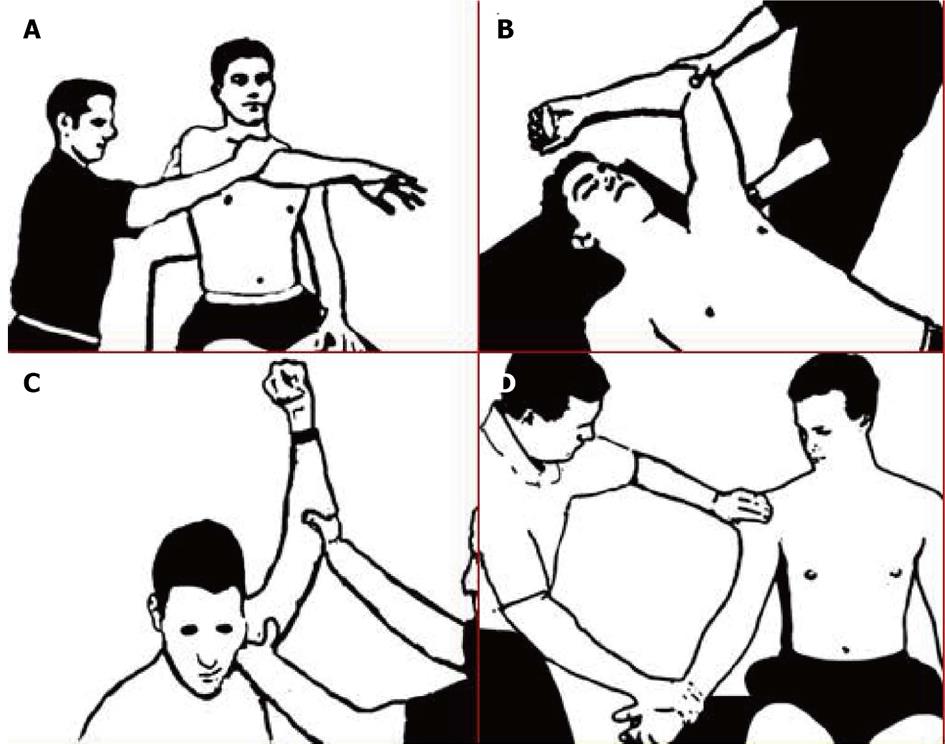Copyright
©2014 Baishideng Publishing Group Inc.
World J Orthop. Jul 18, 2014; 5(3): 344-350
Published online Jul 18, 2014. doi: 10.5312/wjo.v5.i3.344
Published online Jul 18, 2014. doi: 10.5312/wjo.v5.i3.344
Figure 2 Physical examination tests described to detect a superior labrum anterior to posterior injury.
A: O’Briens’s test. When the patient sitting with 90° of shoulder flexion and 10° of horizontal adduction, completely internally rotates the shoulder and pronates at the elbow. The physician applies downward force at the wrist or elbow and the patient resist the force. Pain on top of or inside the shoulder is considered a positive test; B: Biceps Load test. The patient supinates the arm, abduct the shoulder to 120 degrees, flex elbow to 90 degrees, externally rotate arm until the patient becomes apprehensive and provide resistance against elbow flexion, pain considered a positive test; C: O’Driscoll’s Dynamic Labral Shear test. When the the patient is standing with the arm laterally rotated at 120 degrees abduction, the examiner applies anterior shear force. A positive test is indicated by pain; D: Speed’s test. The patient's elbow is extended, forearm supinated and the arm elevated to 90°. The examiner resists shoulder forward flexion. Pain in the bicipital groove is considered a positive test.
- Citation: Aydin N, Sirin E, Arya A. Superior labrum anterior to posterior lesions of the shoulder: Diagnosis and arthroscopic management. World J Orthop 2014; 5(3): 344-350
- URL: https://www.wjgnet.com/2218-5836/full/v5/i3/344.htm
- DOI: https://dx.doi.org/10.5312/wjo.v5.i3.344









